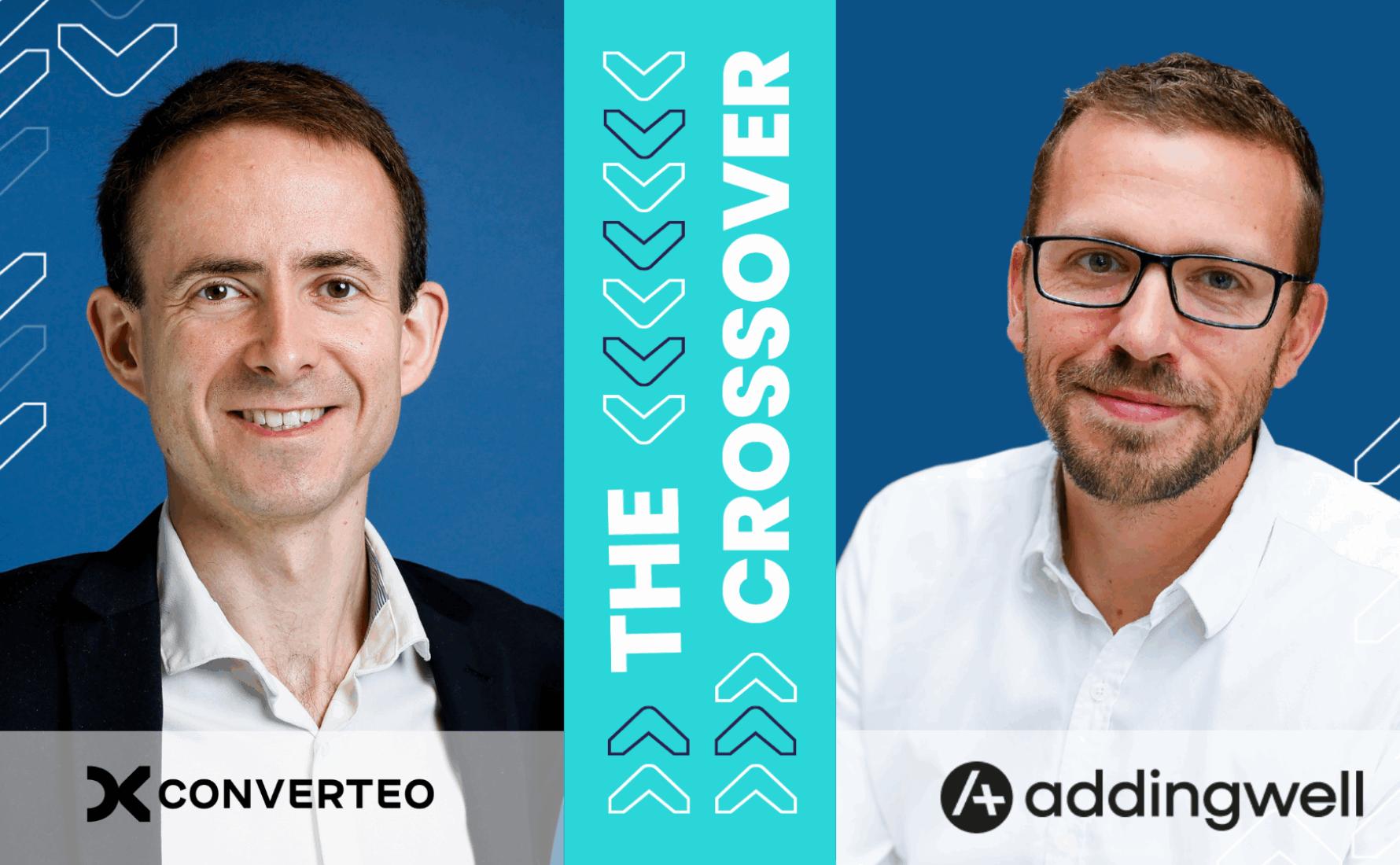Addingwell and Converteo: what future for server-side in 2024?

After a very busy year on Martech/Adtech topics (deployment of Google Analytics 4, proxyfication, Facebook CAPI, etc.), Romain Baert, CEO of Addingwell, and Charles Cortés, Senior Manager at Converteo, examine the multiple long-term benefits of server-side technologies for advertisers.
2023 has been the year of the rise of server-side technologies among advertisers: for what reasons?
Charles Cortés: In 2021 and 2022, server-side was still a somewhat mysterious topic for most of our contacts. In 2023, it has indeed become very concrete for many companies. This shift has occurred for several regulatory and technical reasons.
One accelerator was, for example, the CNIL’s request to “proxy” Google Analytics. To respond to this, it was necessary to be able to process the data on the server side before sending it back to Google according to the conditions required by the CNIL. Through this topic, many players took the opportunity to establish server-side architectures that are versatile enough to consider subsequently launching other use cases enabled by server-side technologies.
Another use case that has been widely deployed in 2023 is CAPI (Conversion API). Indeed, this use case sometimes offers a sufficient ROI to justify starting a server-side project on its own, thanks to better measurement of media conversions and everything that follows (better management of media budgets, audience activation, etc.).
Romain Baert: Server-side emerged over two years ago, but 2023 has truly been the year of its large-scale deployment. We now have many use cases and feedback on the subject, beyond just proxying.
It’s quite rare in the history of technologies, but server-side has the unique characteristic of aligning all interests: those of the IT department, the Data Protection Officer, the marketing teams, and media. All roads lead to server-side: improving web performance, anticipating the end of cookies, ensuring GDPR compliance… It’s hard to be against it!
Once the initial use cases are deployed, what are the next steps for server-side?
Romain Baert: In 2022-2023, server-side was primarily deployed by advertisers around a use case that necessitated it – as mentioned earlier, for Google Analytics 4 and Facebook Conversion API. Now, we are entering a period where the migration is taking place for all possible use cases, marking a real shift.
Now that Universal Analytics is behind us and GA4 is operational, advertisers have the bandwidth to focus on the next optimization topics. Very few projects have, like server-side, the ability to deliver immediate ROI while allowing for regaining control of their data.
Charles Cortés: Since the United States and Europe reached an agreement on a Data Privacy Framework (DPF) last summer, proxification is no longer a short-term issue, as it is no longer necessary to use GA4. However, the future is never guaranteed.
Moreover, many advertisers believe they can now move forward on other topics: optimizing measurement on mobile, managing media campaign margins, making consent collection more efficient… All these points where server-side provides solutions.
What we have seen in 2023 has primarily been the development of “hybrid” server-side, as it still depends on browser-based collection and 1st party cookies. Fully server-side implementations remain a minority for now, but will continue to progress as martech/adtech tools evolve to completely eliminate all cookies, even though this will happen gradually.
What are the main arguments in favor of deploying server-side in the coming months and years?
Romain Baert: Server-side allows overcoming many barriers: ad blockers, restrictions imposed by Apple, and more broadly, everything related to the gradual disappearance of third-party cookies. Ad blockers, for example, account for a loss of data between 15% and 20%: regaining this information enhances retargeting capabilities, increases conversion rates, and improves attribution. For third-party cookies, we are already seeing with Facebook Conversion API gains of 20% on ROAS. We can anticipate even greater gains in the future when cookies disappear from Chrome.
Charles Cortés: In addition to these arguments, server-side is an obvious entry point for simplifying measurement, for example by more easily automating the linking of data with CRM, product catalogs, etc. It optimizes data collection and alleviates the “data layer” (i.e., all the data to be collected available in the code of the website page to be exploited by the browser), which also reduces dependence on development teams, who are also seeking to reduce the time spent on setting up tracking.
Thus, its deployment results in both operational gains and very tangible savings. We are convinced that if in 2023 server-side represented only an advantage for being more reactive, in 2024, its absence will mean a loss of competitiveness.
What advice would you give to an advertiser preparing to initiate a server-side project internally? Should they seek assistance?
Romain Baert: It is essential to consider whether this is a “core business” project or not. If it is not, there is no need to try to develop things internally; it is better to rely on tools that will allow for faster progress, require fewer resources, and provide long-term R&D and updates. One should not believe that it is an IT project with a beginning and an end.
Charles Cortés: One should definitely avoid a short-term vision. On the contrary, it is advisable to consider a multitude of use cases from the outset. This is a legal, IT, data, marketing, and media topic. Among the companies we support on this issue, those that have managed to benefit the most from server-side are the ones that have succeeded in bringing everyone to the same table, ensuring that all teams align pragmatically.

